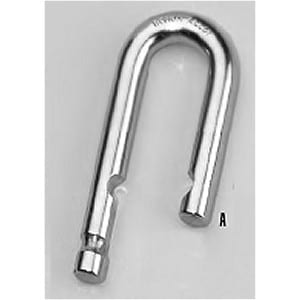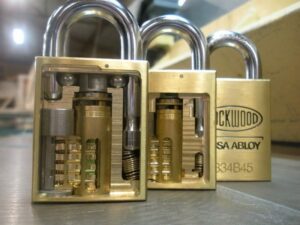3 Tips to Help You Choose the Right Lock for Your Storage Unit
How to Choose the Right Lock for your Storage Unit
Of course, be sure you’re also choosing a secure storage property, but that doesn’t mean you can’t stay proactive with your security. Make sure you get the best lock available, and that it will stand up to the task of keeping your valuables safe. To find the right one for your storage unit, consider these three factors.
1. Use the Proper Shackle Size
The shackle is the curved length of metal that releases on one or more sides when the lock is opened. The most important dimensions for the shackle are the diameter width of the metal and the distance between the highest part of the closed shackle and the lock body. The diameter width of the metal needs to be able to fit into the hasp on the storage unit. If the shackle is too thick for the hasp, you can’t use it. If the shackle is considerably smaller, it will be easier for someone to cut or pry the lock off.
The gap between the closed shackle and the body has the potential to offer quite a bit of security. Of course, if there is not enough room, then it won’t close. But if the gap is too big, it will be easier for the lock to be leveraged against the hasp, and simpler for a cutting tool to gain access. The art is in getting the lock to successfully close so that it can barely be moved while on the hasp. Certainly, quality storage companies protect your unit, and most offer reasonably prices self-storage insurance, but you should still use a lock that is harder for criminals to open.
2. Protect it from Weathering
In the case of most drive-up storage units, your lock will be exposed to the elements. Though your unit may be climate controlled, your lock will be out in the cold and the rain. Prolonged exposure to water and dirt can damage it over time. Whether it is rust or the buildup of grime, the lock can get much harder to use. In some cases, they can seize up entirely. This can be a major inconvenience as you may need to break it open or even call a local locksmith to deal with the lockout. To get around all of that, invest in weathering protection.
Many padlocks come with a rubber or plastic housing. This is intended to shield the metal from direct contact with ice and water. Make sure that the covering is tight around the closed shackle to prevent internal moisture build up. Also, look for some form of keyhole cover, so that it’s not easy for dirt and particulates to enter the keyway. As dirt builds up, the internal mechanisms begin to jam up, making the lock harder to use. This also increases the chance of a key breaking.
3. If Possible, Choose Ball Bearings
Most of the locks you’ll find at hardware stores use spring-loaded mechanisms to secure the shackle. You can tell this by the angular cut at the bottom of the shackle that releases when the device is opened. These types of locking pawls are easy to depress with shims (which can be made out of a soda can, with little effort and effective results). If you are storing with a company that does not have on-site staff or security measures to help keep your unit secure, it’s especially important to use a lock that contains ball bearings. A shackle with ball bearings will have a half-circle indentation. These are a more secure mechanism.
This article was written by Ralph Goodman, lead writer of the Lock Blog








